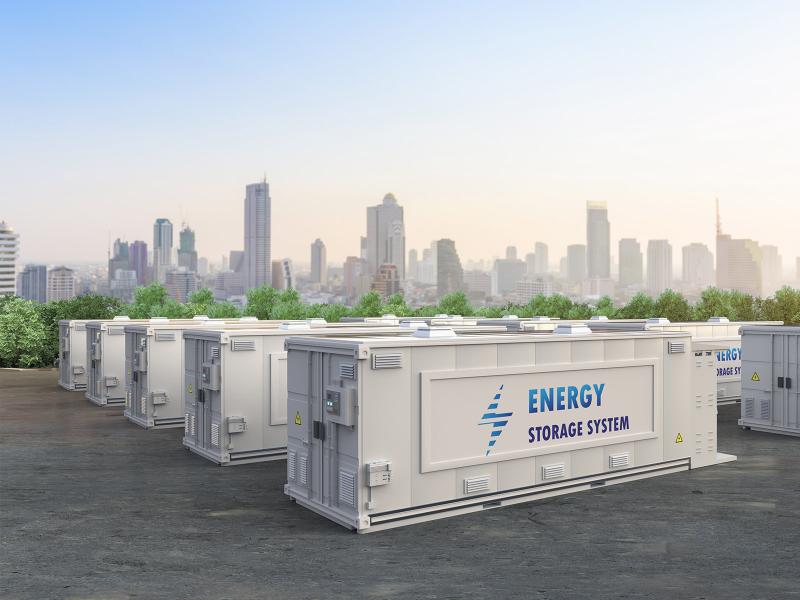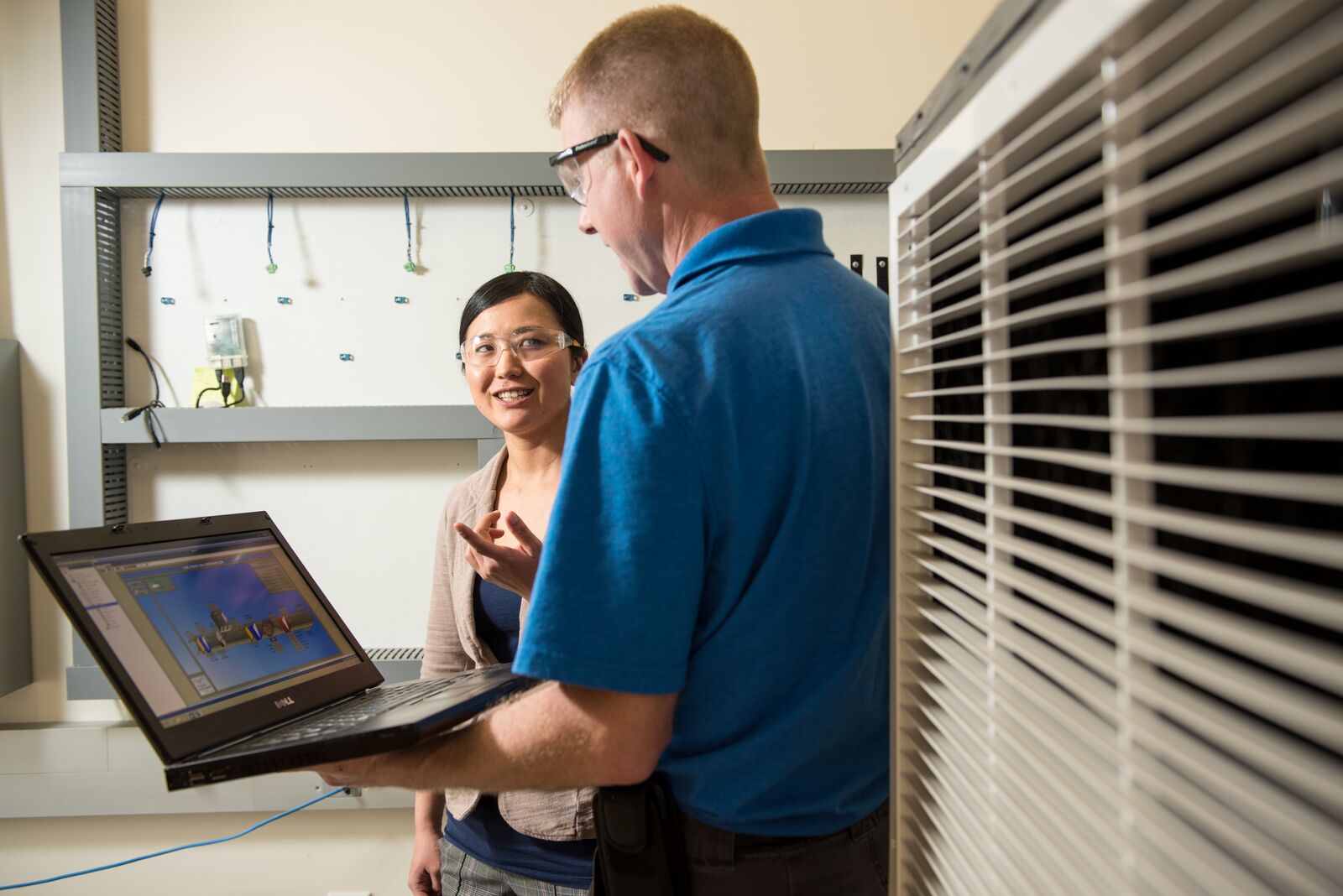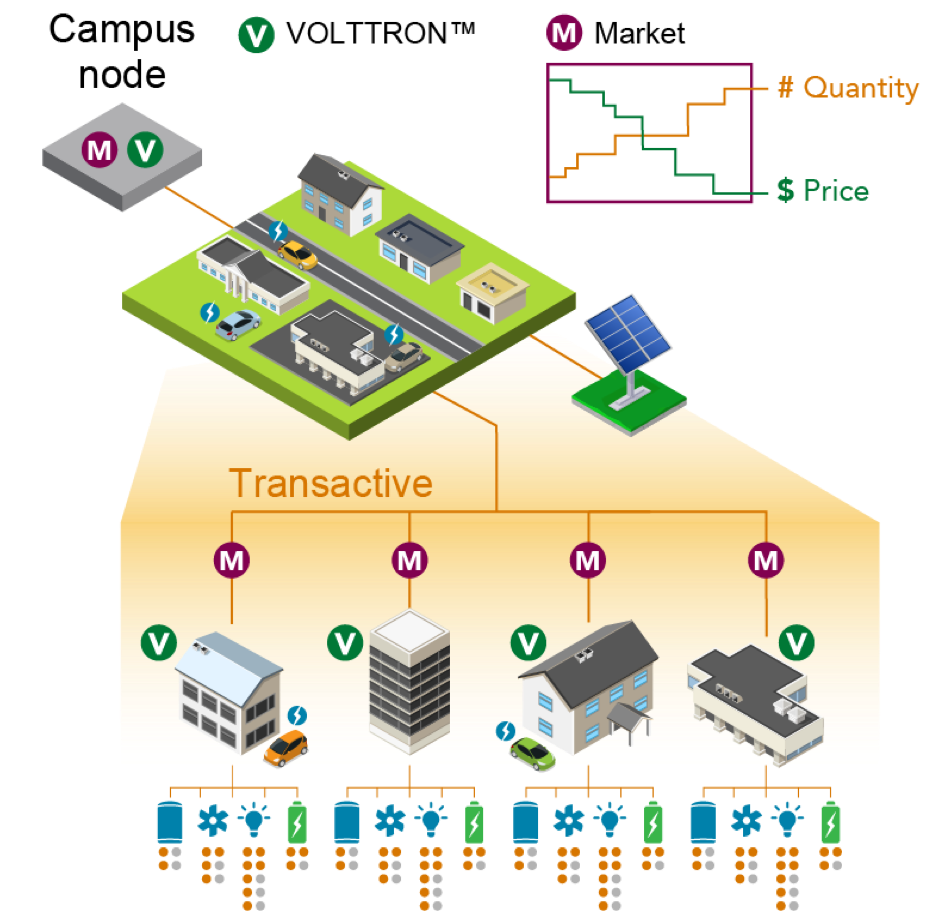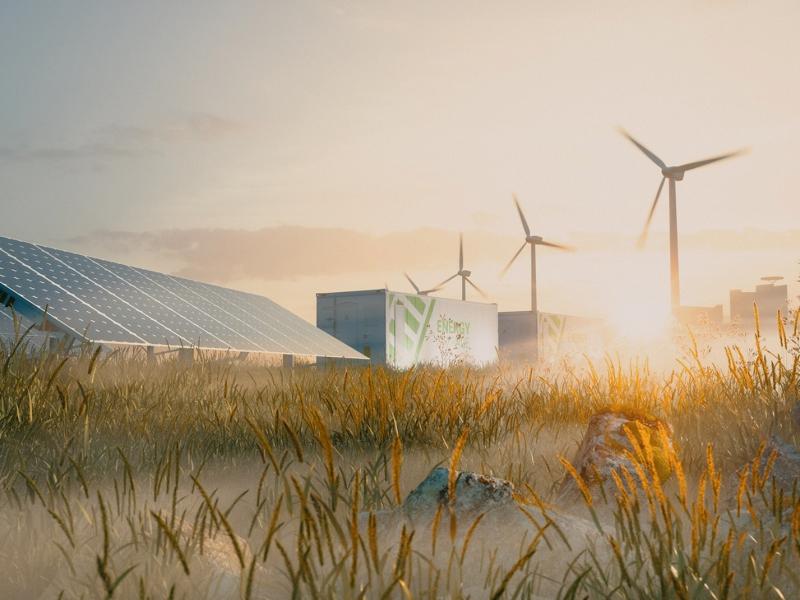
Flexible Loads
and Generation
Flexible Loads
and Generation
Energy solutions for the nation
Energy solutions for the nation
When it comes to our energy system, flexible loads and generation are changing the traditional relationships between the electrical grid, buildings, distributed energy resources (DERs), microgrids, and more. At PNNL, our research considers all of these factors to find creative energy storage solutions that are reliable, affordable, and flexible.

The storage solutions are not represented in just physical batteries but rather through a virtual approach that encompasses a broad spectrum of technologies. The solutions take the form of optimization and control tools and methods that shape and shift electrical loads and generation in ways that effectively coordinate energy use, integrate DERs, and support the grid much like a physical energy storage device. PNNL possesses and brings a wide range of relevant capabilities and expertise to this work.
Our research focus areas include:
- Capturing and quantifying the potential flexibility of generation, DERs, and loads
- Identifying the sources and character of flexibility from building equipment to large, traditional dispatchable generators
- Developing controls and communication technology and integration approaches that augment opportunities to support grid services and maintain the comfort of building occupants
- Evaluating, developing, and improving flexible generation technology capabilities and methods for seamless integration with the power grid.
- Understanding and developing mitigation strategies for environmental implications from using generation more flexibly.
PNNL's research supports the aims of the U.S. Department of Energy (DOE) Office of Energy Efficiency and Renewable Energy and other DOE and federal government agencies.
Flexible loads (virtual batteries)
PNNL plays a lead role in the DOE's development of virtual batteries. In residential and commercial buildings, this approach coordinates electricity consumption of existing flexible loads, such as water heaters, air conditioning systems, and more, to create virtual storage.
Researchers are identifying, quantifying, and assessing the challenges of controlling virtual storage assets to complement grid-scale physical energy storage systems and building-integrated batteries. A large national opportunity exists for application of virtual batteries to support a reliable grid, and experts at PNNL assess and identify that potential.
Advanced Building Control and Coordination
PNNL works at the forefront of advanced building control and coordination strategies for at-scale engagement of DERs, creating methods for efficiency and energy savings.
In control and system co-design, researchers at PNNL accelerate the development and delivery of advanced, cost-effective heating, ventilation, and air conditioning systems. These systems interact with the grid but also readily tap on-site resources and energy storage to meet system power needs.
Other advanced building controls research makes buildings more efficient and more capable of enabling virtual energy storage strategies. For example, PNNL-developed technologies for automated fault detection and diagnostics (AFDD) combine algorithms and the VOLTTRON™ distributed sensing and control software platform to interrogate building automation systems, gather data, and correct operational issues. Another example is PNNL’s pioneering Re-tuning™ techniques, which include AFDD technology and associated methods. Re-tuning™ has enhanced the efficiency of millions of square feet of floor space nationwide, and tenets of Re-tuning™ have been adopted by several large municipalities, including Seattle and Philadelphia.
PNNL continues to deliver impact through control and coordination methods that simultaneously deliver advanced grid services while setting the stage for future transactive energy systems. Researchers created Intelligent Load Control (ILC) to manage the operation of heating and cooling systems and other building devices to quickly reduce load during peak power use on the grid. Researchers also have developed and deployed technologies that achieve economic dispatch in combined heating, cooling, and power systems.
Transactive Energy
PNNL pioneered transactive energy concepts in the 2000s and retains a breadth of relevant expertise and capabilities in the discipline..

PNNL envisions transactive energy as an intelligent, multi-level distributed controls approach that coordinates the actions of energy suppliers, customers, and delivery resources. Within this vision, the power grid, homes, commercial buildings, and DERs all communicate with each other, and even smart appliances such as home heating and cooling systems join the conversation. All parties rapidly negotiate energy procurement and consumption levels, cost, timing, and delivery to create a more efficient market.
PNNL’s Transactive Coordination and Control technology and associated market-clearing mechanism have shown promise in realizing transactive concepts and are, along with other technologies, being deployed in an Eco-District model in Spokane, WA.
Microgrids
In addition to supporting critical end-use loads, microgrids can act as points of aggregation—that is, bring together, under an efficient controllable framework, increasing numbers of DERs deployed at the distribution level. These DERs can include on-site generation and stationary energy storage systems.
PNNL provides new insights into microgrids, DERs, and networks of microgrids. Through simulation and field demonstrations, PNNL explores the networks and their support of the bulk power system during abnormal conditions, particularly the networks’ ability to self-assemble to support critical end-use loads.
PNNL researchers also work with the U.S. Department of Defense (DoD) to develop innovative solutions, operational tactics, and optimized microgrid designs that increase DoD sites’ energy and water resilience. This includes the integration of multiple generation sources in an intelligent configuration to reduce the reliance on a single backup power source.
Flexible generation
Beyond flexible loads, PNNL actively explores flexible generation. Flexible generation can serve as energy storage by modulating its output per grid needs and variable energy availability.
Hydropower
Hydropower's reliability and flexibility make it a key energy asset in the grid. Experts at PNNL work to improve hydropower technology capabilities and resource and grid models. These researchers also seek to better understand environmental implications of the development of new hydropower resources.
PNNL’s hydropower research areas include:
- The impact of environmental requirements on hydropower operations and flexibility – To function as an energy storage solution, hydropower must operate in a manner that also protects river health. PNNL experts in biology, population dynamics, behavior, data analytics, modeling, engineering, and communications help find solutions that benefit both ecosystems and power systems.
- Pumped storage hydropower (PSH) – Researchers at PNNL study PSH, which is the only commercially deployed form of long-duration storage, an important attribute of the future grid.
- Enhanced hydropower dispatch systems via integration of hydraulic and dispatch models – PNNL helps industry obtain a stronger understanding of hydropower resource storage capabilities through the development of improved hydropower representation models in continental-scale power grid reliability studies.
Geothermal
Geothermal technologies represent a new frontier for reliable, baseload power and, as with hydropower, offer the potential to function as flexible generation. PNNL evaluates the technologies’ flexibility in contributing to grid reliability. Researchers also actively characterize emerging geothermal technologies, enhancing their capabilities to deliver a flexible geothermal resource at any location (i.e., enhanced geothermal systems) and thermal energy storage.
Wind
PNNL characterizes wind energy in terms of when, where, and how power can be generated and transmitted, and the value it represents. Researchers explore temporal attributes by year, season, day, hour, and minute, defining the inherent ability of wind to serve loads during critical system states such as heat waves and at times of low energy availability. Pairings with energy storage may relieve interconnection and transmission congestion on grids. Researchers also study resource ramp rates anticipated from temporal variations to estimate the degree of balancing reserves that may be required to integrate wind and other similar generation sources.
Wind technology as a DER generates electricity to serve on-site, behind-the-meter loads, loads interconnected to the same distribution grid, and loads for remote, off-grid sites or isolated grids. Wind can potentially provide a wide variety of grid services, such as frequency response and voltage support. Researchers at PNNL are formulating methods to value distributed wind (beyond just the metric of levelized cost of energy); modernizing modeling and simulation tools so distributed wind is better represented; addressing technical challenges; and improving distributed wind resource assessment capabilities.
Marine Energy
Researchers have found that marine energy’s location, predictability, the character of its generation output, and its persistence can be valuable to the electric grid by complementing other energy resources and enabling more flexible grid operations. Researchers at PNNL work with universities, technology developers, system operators, and local communities to improve resource and technology characterization, modeling of marine energy resources in electric grid models, and identification of near-term opportunities for technology deployment.
Hybrid Generation
The integration of batteries with conventional generation resources, such as hydroelectric plants or PSH resources, to achieve improved plant performance offers increased operational flexibility. Ultimately, the optimal hybridization can assure system reliability by increasing resource flexibility and dispatchability. Researchers at PNNL develop advanced control strategies for operation of hybrid power plants, as well as methodologies and tools for the valuation and design of hybrid plants based on different types of energy storage technologies.
- Deferrable loads—Extremely flexible loads, part of PNNL's hybridization strategy, are an alternative to energy storage deployment. These electrical loads are unique in that they need to be supplied for a portion of the day, but can be stopped with limited notice and easily resumed without degrading the quality of service. These loads make use of power when it is available, acting as energy storage in a sense and thus bypassing the need for additional storage, transmission investment, or other resources to balance the load. PNNL’s exploration of deferrable loads includes electrolysis, desalination, computational loads, and mineral extraction. If control systems are designed with the appropriate response times, switching between these loads to bulk electricity output can provide a range of grid services on demand.

